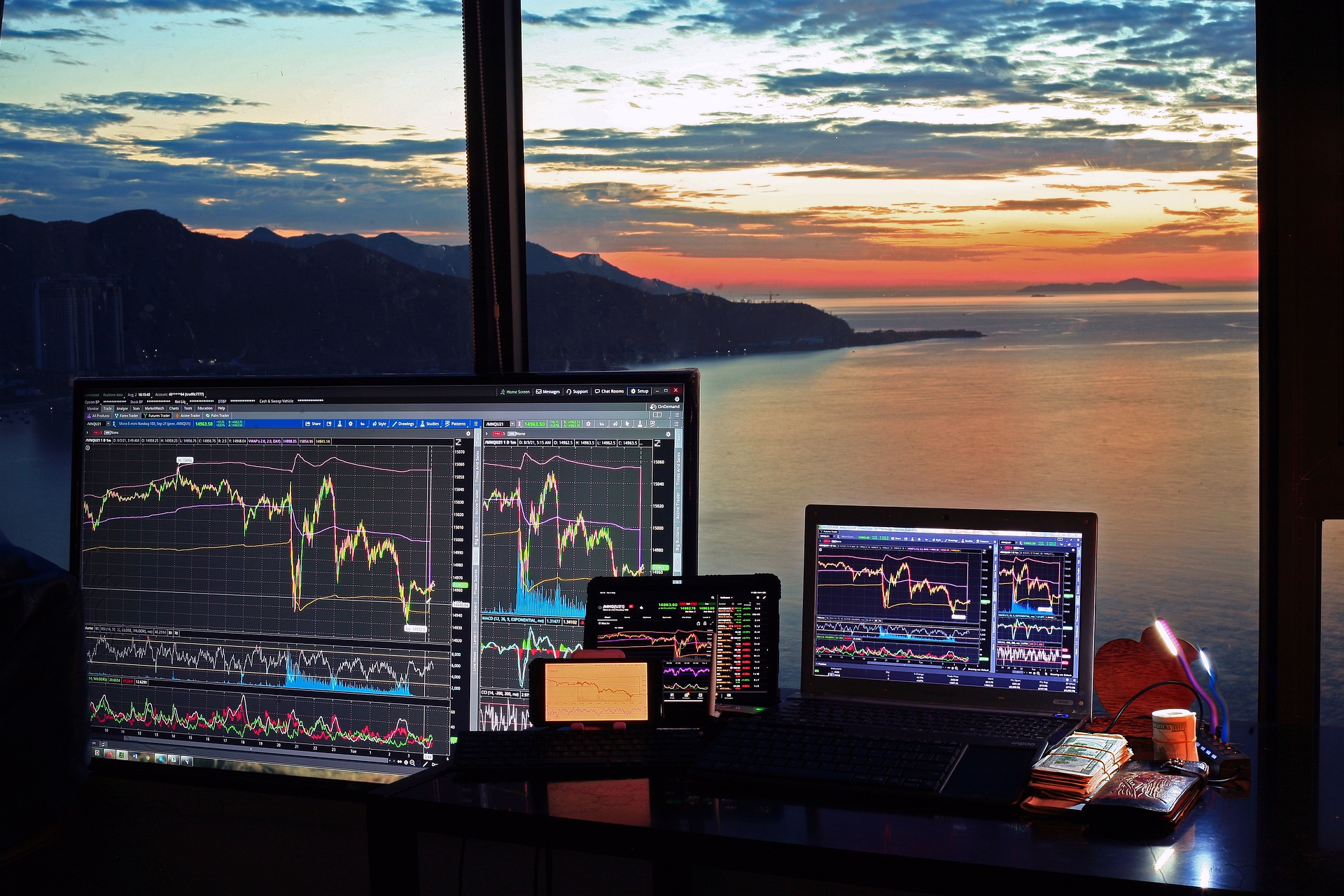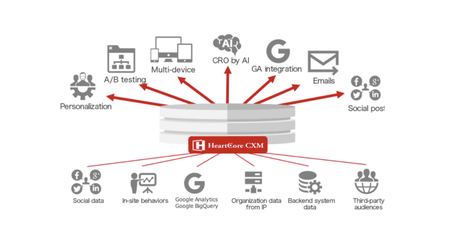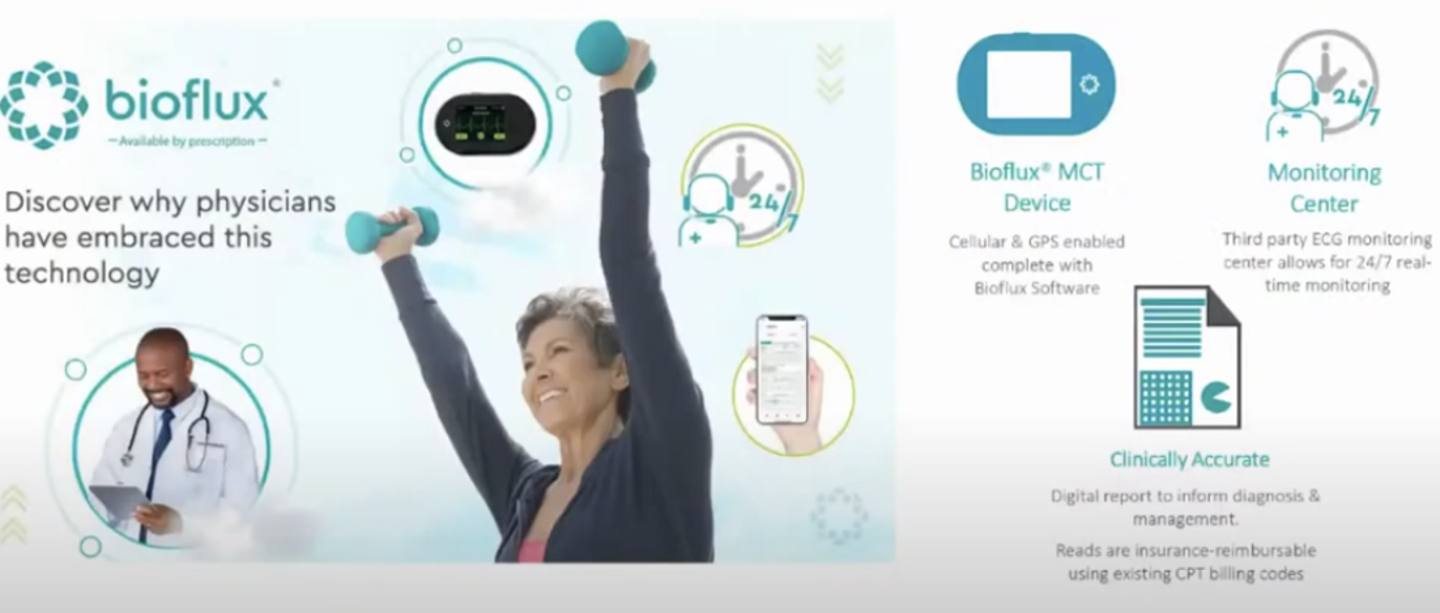
Healthy Hearts and Healthy Wallets: Why one HealthTech Startup is a Must-Invest
Previously published to Benzinga: The following post was written and/or published as a collaboration between Benzinga’s in-house sponsored content team and a financial partner of Benzinga.
Last month, we saw a lot of great startups at the Benzinga Global Small Cap Conference. Many of them screamed, “This is an innovation tech stock you need to buy now!” But given the state of our world at this moment, one startup really stood out.
Its key product is the Bioflux and it’s considered the “smallest, most accurate device on the market.”
Our Current Problem
Heart disease is the leading cause of death in men and women every year in the United States. In fact, 1 person dies every 36 seconds in the U.S. from cardiovascular disease, according to the Centers for Disease Control (CDC). That’s about 655,000 Americans and 1 in 4 deaths every year.
But, that’s in a normal world. High-risk patients are of the utmost concern, and COVID has only amplified the problems we already had.
For the last year, our greatest enemy has been COVID-19. Some experts say we’re at the tail end of the virus, while others say that we’re not even close. What they do agree on, however, is that COVID-19 — even in its most mild form — can cause long-lasting health problems, especially to the heart.
Survivors with severe cases of the virus often saw significant damage to their hearts. In addition, they were told they may also now fight chronic heart disease for the rest of their lives.
In one study, half the patients showed signs of scar tissue because of inflammation. Heart damage was seen in more than 50% of patients hospitalized with COVID-19 and even higher rates were seen in those who recovered at home.
A Critical Tool in Finding the Solution
BTCY could possibly be the solution — or at least a vital tool — for long-term care and monitoring of heart disease in patients all over the world. This award-winning startup provides both patients and their physicians with real-time 24/7 monitoring, diagnostics and alerts by way of a small, wearable device.
Doing Away with Outdated Technologies
When it comes to our health, it’s critical that we adopt the newest, most effective technologies on the market. Accuracy is everything. And in the case of existing heart-monitoring products, sunsetting outdated technologies should not come too late.
Most heart-monitoring products use passive recording, meaning that for the next 2 to 4 weeks, a patient’s data will be recorded onto the device and accessed at the end of a 30-day period before any diagnostic decision is made. This data is often old and unreliable, causing major bottlenecks in the path of cardiac recovery. What’s worse is that sometimes this data isn’t recorded, and the entire month is often rendered invalid before monitoring is repeated.

Patients benefit most from an immediate response.
These devices are slow, unreliable and unable to be accessed by the patient’s physician directly. They also lack cross-compatibility with other devices and solutions. Long-term, continuous monitoring results in better detection of early warning signs of illness, but so often, these technologies slowly lag behind.
Why Remote Monitoring?
High-risk and post-procedural patients should remain under observation until their condition significantly improves. Remote patient monitoring (RPM) allows patients to be monitored from home. In turn, physicians will be able to see more patients, perform more intensive procedures and identify which patients need more time and attention — only this time, there are multiple eyes on the progress of these patients.
During the height of the pandemic, we saw hospitals overrun with patients suffering a broad array of illnesses. At one point, doctors pushed back essential surgeries to protect their patients from the disease. At that time, it was almost safer for patients to stay home. But, safeguards had to be put into place.
What Makes Bioflux a Superior Device?
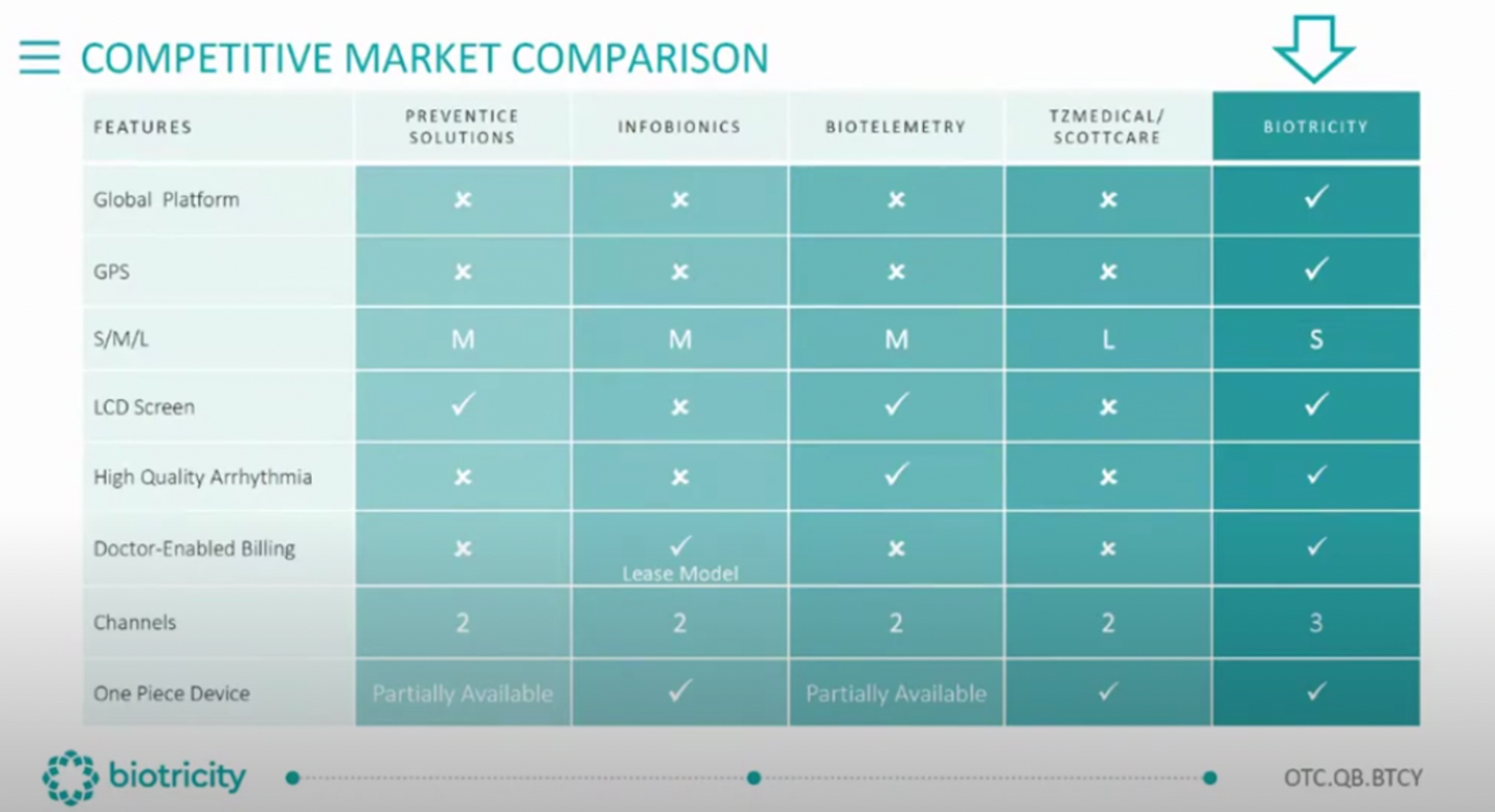
Mobile Cardiac Telemetry (MCT) is an effective form of cardiac monitoring that tracks a patient’s arrhythmia throughout the day. They are the only heart-monitoring devices that can provide continuous monitoring for up to 30 days straight. Devices with continuous activity provide the most accuracy and — in the case of Bioflux — can detect even the most minute of reactions.
It’s through this type of activity that Bioflux provides its patients with emergency response.
The device is a 1-piece solution worn around the neck and under the shirt. Irregular arrhythmia alerts the wearer and transfers data directly to a call center, where emergency response teams can review its activity and dispatch help right away.
You can imagine how many more lives are saved because this device works even while the individual is asleep.
Traditional Holter monitors do not provide arrhythmia detection and do not have real-time connectivity. Plus, their highest diagnostic yield is only at around 24%, whereas non-Biotricity MCT devices offer much more, with a high yield of 61% after the patient receives an implantable device. In-office event monitors are somewhere around 23%.
More often than not, these devices do not track a patient’s daily activities and/or sleep cycles — things that can make the greatest difference when trying to treat any condition, let alone heart disease.
Integrated monitoring capabilities
In so many cases, parallel conditions exist. One patient who has heart disease, for example, may also have diabetes. In the past, cardiac devices weren’t designed to detect factors that could be contributing to both diseases. It’s nice to track and assess these variables in real time so that one might receive optimal treatment.
Bioflux is an intelligent, wearable device. It catches the anomalies during arrhythmic monitoring and immediately connects the wearer to medical help.
Real-Time Monitoring is the Future of CMS
Capable of decreasing the rate of hospital admission among victims of heart disease, the effective use of RPM allows physicians to see more patients, perform more procedures and identify which patients need more time and attention.
Bioflux was created with the idea that all cardiac devices should be compatible with non-related devices because in some way all disease is relatable. Biotricity realized that doctors would benefit from having access to all other data.
While the Bioflux is HIPPA-compliant, this data would be made available through patient consent. This data would allow doctors to create a better roadmap to potential recovery in some cases, finding the common links between patient activity and ongoing health conditions.
Real-time mobile cardiac telemetry (MCT) is a $1 billion industry and growing rapidly. Preventive care saves both patients and their insurance providers from much higher medical bills in the future. Bioflux used this as an entry point in gaining approval from the Centers for Medicare and Medicaid Services (CMS).
Both current and future pipeline products are insurance reimbursable through existing current procedural terminology (CPT) billing codes. There are fewer players in this space and even less competition.
These devices are more convenient. And with CMS approval, coding and billing can be done once the patient begins using the device. Ongoing monitoring can take place with a primary care provider, and patients won’t be sent to any additional service providers — unless specialty care and treatment are necessary, thereafter.
The future is real-time outpatient cardiac monitoring, which has been approved by the U.S. Food and Drug Administration (FDA) and is already on the market.
Why do Doctors Love Bioflux?
MCT is traditionally an outsourced business model, where either hospitals or physicians end up referring patients to an external service provider for testing and follow up. Not only do doctors have to make sure their patients actually go get the service they need, they also have to follow up with each party to receive the final results before making a diagnosis.
It’s a lot of footwork and can almost cost more in time and energy than the minimal reimbursement for referral is worth — especially if testing failed the first go-around.
Physicians need immediate answers, especially when trying to save lives. Not only are their patients able to receive adequate care through in-office use of Bioflux devices, they also can earn up to 10 times the revenue they have previously made, and there’s no upfront cost to do it.
Physicians need a simple and integrated approach to remote cardiac monitoring within their practices. This allows them to:
- Diagnose and prescribe monitoring equipment to patients with multiple comorbidities.
- Actively monitor data from compromised patients to trigger real-time intervention.
- Reduce patient risk and physician liability through faster diagnosis.
- Collect data in a straighter, simpler path rather than sending it out to a lab.
- Reduce the time and energy already at-risk patients spend running around for testing.
- Bill insurance companies directly.
Biotricity allows physicians to create their own procedural models and doctors to monetize the entire Bioflux ecosystem. This is unique in the MCT space, and doctors will earn more money providing in-office, remote monitoring services than through the same referrals they have in the past.
Physicians like this device because the data is there and available, whenever and wherever they need it. It’s also cheaper, better and faster than other devices on the market. A turnkey solution for physicians, there is a minimal upfront cost for the physician, and the physician only pays when the device is in use.
Through most other channels, the patient has to keep track of more than one device. But, Biotricity has consolidated this device into just one piece, which is ultimately less for the patient to keep track of. The device is reusable and easily sanitized between patients.
With a built-in globalized GPS and GSM platform, a wider array of arrhythmia detection is available — crediting the Bioflux with having the industry’s fastest sampling rate and leading to best-in-class cardiac diagnostics. The product interconnects patients with their doctors on a more regular basis, which also leads to an increase in touchpoints and an even higher success rate when treating comorbidities.
The Future of Biotricity
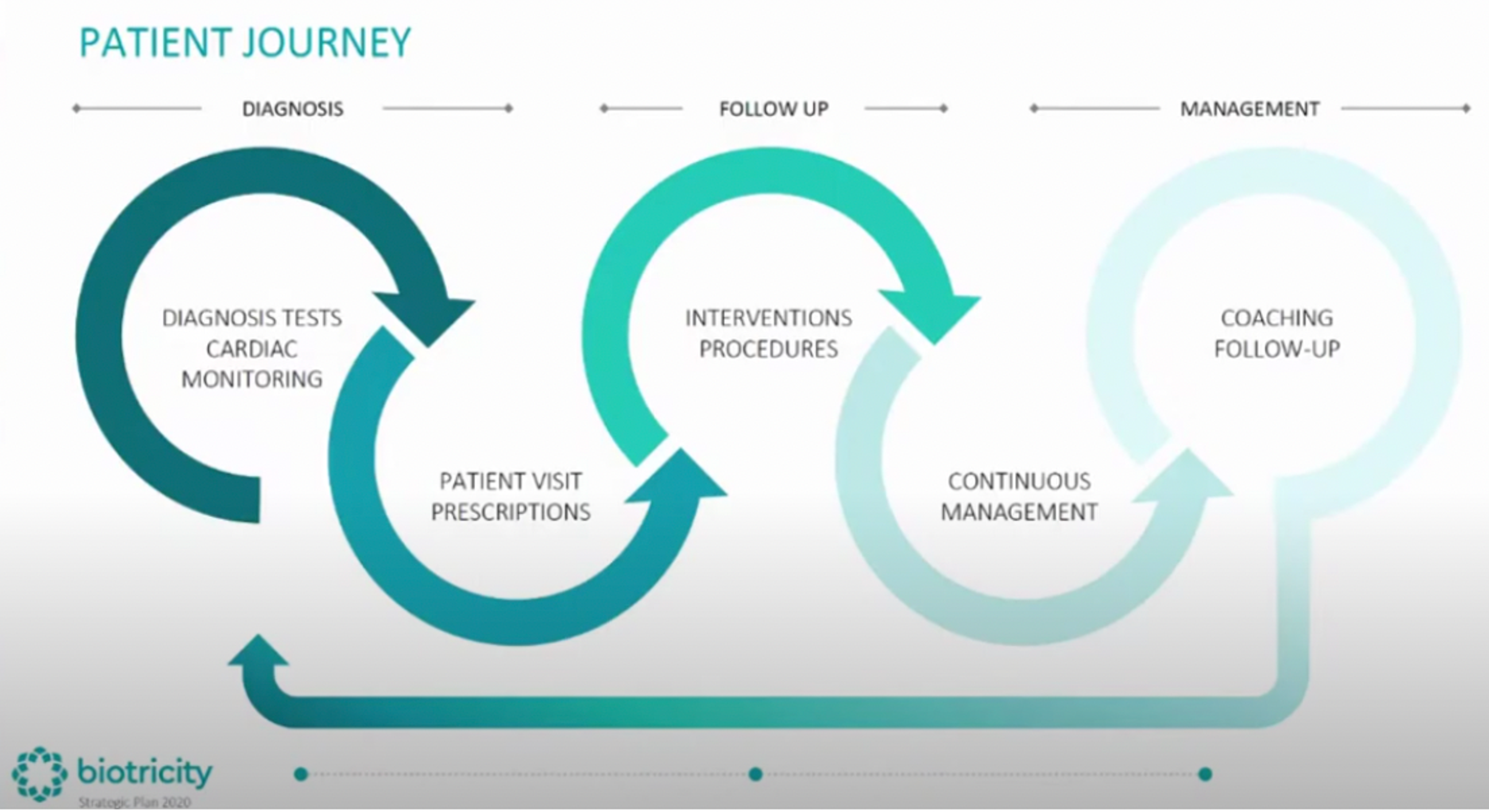
Biotricity is quickly making its break into new markets. With new touch points between patient diagnoses, the company soon will see a major shift in revenue by filling a void that currently exists between periods of diagnostic testing.
Four new products — the Biotres, Bioheart, Bioflux 2 and Biocare Telemed App — will allow patients to better manage their prescriptions, maintain parallel diseases, follow up with doctors and receive frequent coaching. Soon available for in-home monitoring, these products will be available to both consumers and prosumers, alike.
Large-scale production is already in place with 300 centers across 23 states. And, more focus is being put on building an expanded salesforce as well as on establishing a much larger footprint within the healthtech industry.
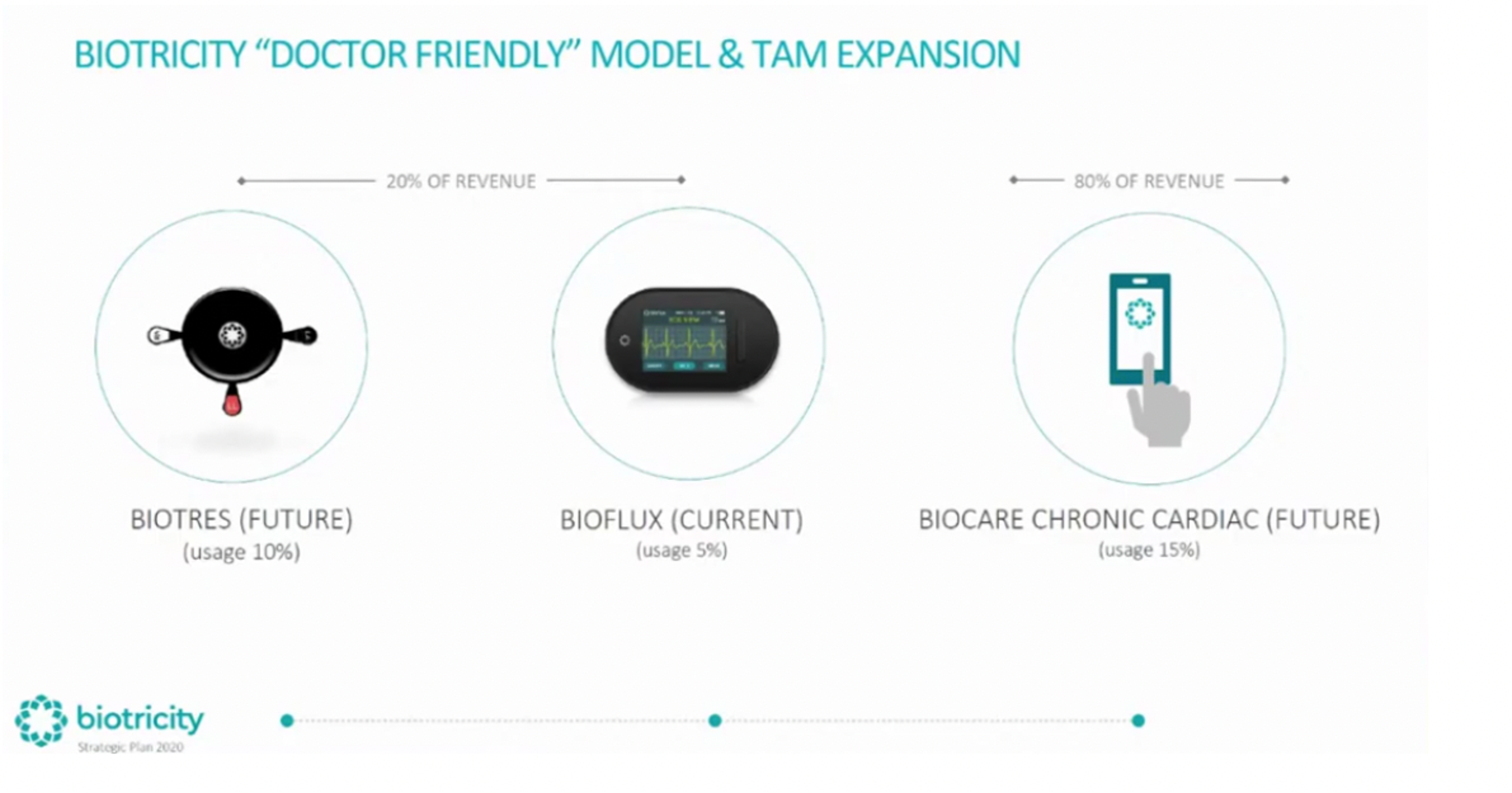
Bioheart is a 3-lead patch solution for real-time and passive arrhythmia monitoring.
It’s a simplified, nonprescription version of the Bioflux device that patients can use at home. It is considered a necessity for patients at risk of or diagnosed with certain cardiac issues. Biotres can operate as a holter, event loops and potentially as a wireless patch in conjunction with Bioflux for MCT. Biotress ensures advanced diagnostic capability while focusing on ease of use. This product has recently been filed with the FDA and is expected to gain clearance at the end of Q2 2021. It is also set to increase the value of the entire market from $1 billion to $3 billion.
Biocare Telemed is a HIPAA-compliant virtual clinic platform designed to meet the stringent needs of cardiologists everywhere.
This product ensures seamless integration into any existing client workflow, ultimately saving the clinic time and costs associated with proprietary integration. Here, clinics can manage and book appointments, connect to other diagnostic tools, report, monitor and diagnose patient conditions based on remoteless, real-time app reporting.
This platform is expected to cater to 10% of the entire market once released.
The Biocare Health App promotes better pain and disease management.
This app allows patients to input daily pain levels and metrics relating to food, medications, mood and exercise. It allows physicians to learn more about the day-to-day lifestyles of their patients while providing them with better care for long-term health.
This platform is expected to cater to 15% of the entire market once released.
Why you Should Consider Investing in this Healthtech Startup
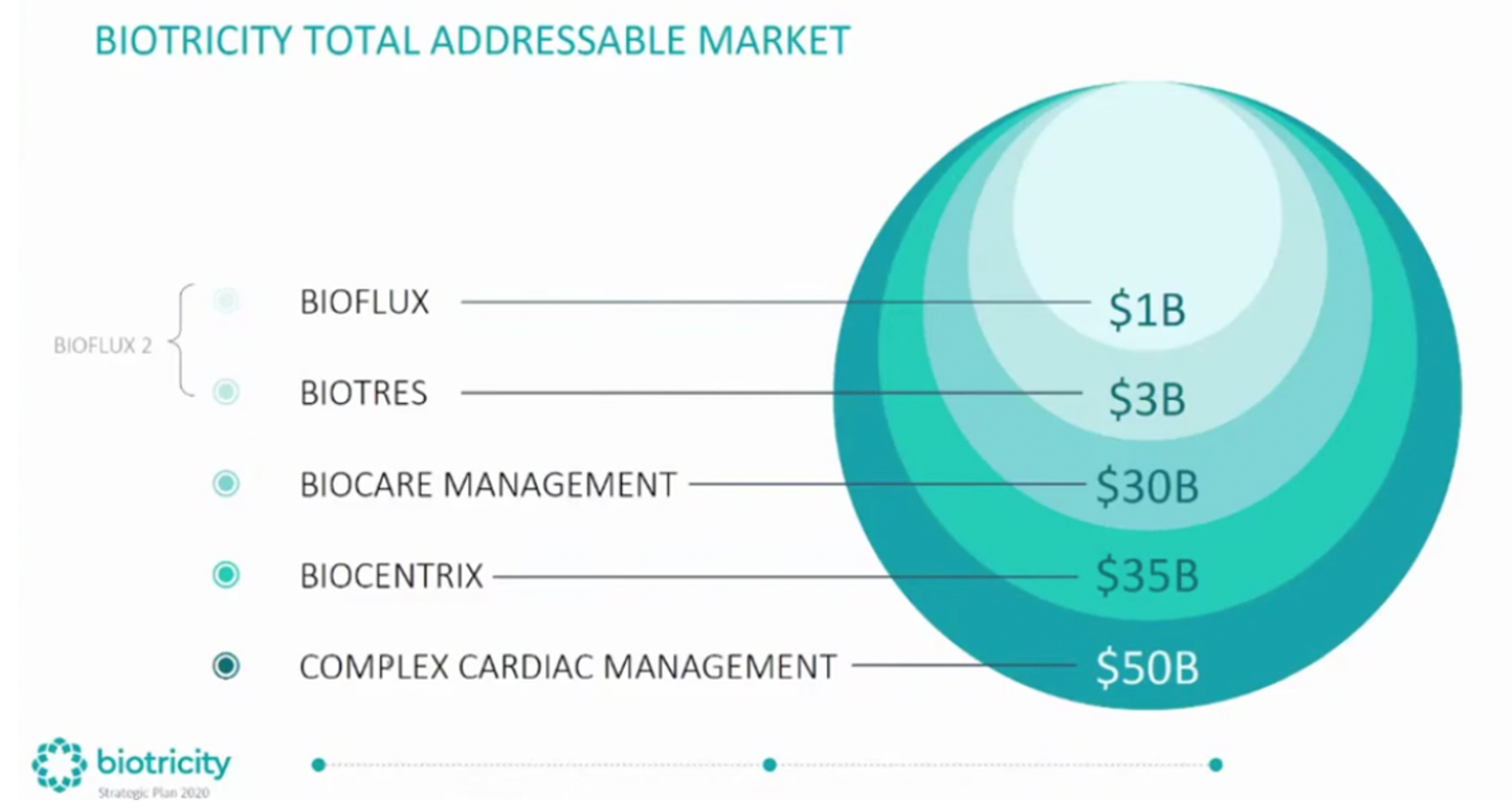
There are 30 million people in the U.S. at risk for heart disease. Of those, 17 million have received a diagnosis, and 2 million patients receive remote cardiac monitoring a year. The total addressable market is valued at $1 billion.
Here, there are 2 different services at play. First, Biotricity has a disruptive technology as a service model (TaaS) with a high margin, and it will drive recurring revenue across both existing and future existing products. But through this service, its clients also are able to provide patients with cardiac monitoring as a service (CMaaS). Global cardiac monitoring, alone, is set to hit more than $31.3 billion by 2023.
Biotricity is expected to reach annual revenue of $50 million in less than 4 years. The business saw profits double from the 1st quarter 2019 through Q1 2020 with the single-best month of sales at $1 million during Q3 2020. Since then, the company has experienced 25% quarter-over-quarter (QoQ) growth and triple-digit growth just since the pandemic. Its current run rate is $7 million, up $3 million from the previous quarter. The company continues to add sales teams, offices and a growing client base.
Biotricity began in one market with one product. And, now it has five. New cardiologists and testing sites are added daily, and the company has a 100% retention and reorder rate.
With proven go-to-market strategies, quality products and effective models for sales and operations, the company has seen an increased turnaround in FDA approval for multiple products and services. The company currently has multiple submissions in the pipeline.
The first product came out in April 2019 and has since seen 23 consecutive months of month-over-month growth, except for 1 month that remained somewhat stagnant because of the coronavirus pandemic. Each product costs $383 to make, but the company makes an average profit of $7,000 per device.
Today, 100% of sales come from Bioflex — although other products are slowly ruling out and receiving preorders. Bioflex serves only 5% of the global patient population, with 1,100 cardiologists onboard.
According to the company’s CEO, chairman and founder, Dr. Waqaas Al-Siddiq, each cardiologist sees around 2,000 patients who need a device just like this. That’s almost 2.2 million patients served today. Biotricity earns between $250 and $300 each time the product is used. Products are used once per month and have a 2-year lifespan.
Because most patients will only receive a new diagnosis on an annual basis, new products and services will quickly take the helm of all profits made across the market.
Want to learn more about Biotricity and how this startup is saving lives? Be sure to check out https://www.biotricity.com.
The preceding post was written and/or published as a collaboration between Benzinga’s in-house sponsored content team and a financial partner of Benzinga. Although the piece is not and should not be construed as editorial content, the sponsored content team works to ensure that any and all information contained within is true and accurate to the best of their knowledge and research. This content is for informational purposes only and not intended to be investing advice.
